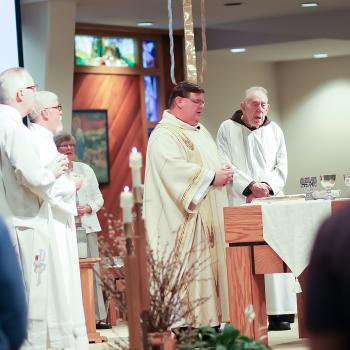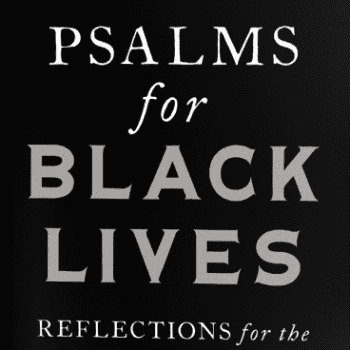Lectionary Reflections on Luke 10:30-42
Continuing with the theme of “How Not to Be a Disciple” we turn to Luke 10:38-42 , the story of Martha and Mary. To not be a disciple, one would need to model herself/himself after Martha or Mary only, and not integrate the two in a life of study/service. What follows are some reflections on how to be a disciple, gleaned from this brief story from Luke.
I have always felt that Martha gets some bad press in this story, in which Martha and Mary take on the same roles they do in John 12. There Martha prepares the meal while Mary anoints Jesus in an extravagant manner. While I appreciate the elevation of women as learners of Torah implied by Jesus’ praise of Mary, I think Martha deserves more empathy and understanding than we usually offer her. She is, after all, the one who welcomes Jesus into her home as he hoped people would greet the seventy in his instructions to them in Luke 10:5-9. She is in the process of preparing a meal for him. And the thanks she gets is a negative comparison between her and her sister and a scolding for wanting some help setting the casserole dishes on the table. If I’d been Martha, I’d have been tempted to take off the apron and sit down at his feet. And I might think, but not say, the following: “Let’s see how he and Mary, the little teacher’s pet, enjoy their Bible study once their stomachs started rumbling!”
I can certainly relate to Martha’ frenetic feelings. The Greek word for “was distracted” indicates “to be pulled, dragged away.” The connotation is that Martha has become distracted and overburdened by the pressure of providing hospitality. Most of us can relate to the feeling of “Why did I invite all these people?” that comes a couple hours before guests arrive. When the first floor still needs vacuuming and the back patio needs to be swept just in case anybody goes out there. And your son calls from the grocery store and says he can’t find any ripe avocados for your guacamole. Margaret Guenther in her book Holy Listening says that, when it comes to the spiritual gift of hospitality, it takes a lot of work to make it look effortless. To make a neat, orderly space in one’s home, to prepare and serve food, all of this adds to an already busy life.
Paul Borgman, a professor of English and specialist in biblical narrative, suggests that we see this story as part of a larger unit: Luke 10: 25-42; 18:15-34. The theme that drives this section is the lawyer’s question and its answer (10:25-27). The lawyer’s question, “What must I do to inherit eternal life?” prompts Jesus to tell the parable of the Good Samaritan. The answer, provided by the lawyer and approved by Jesus: love God and neighbor (10:27).
According to Borgman, Martha’s worry and distraction as a hostess are completely “normal.” The problem is in her motivations and psychic clutter. Martha was “distracted with much serving” (10:40). The verb is periespato, “to be anxious, to be unduly concerned.” It expresses a worldly attitude that diverts a person’s attention away from a proper concern for the things of God (1 Cor 7:32-35) (Marshall, 452).
Borgman sees a parallel between Martha and the lawyer in 10:25, in their preoccupation and anxious justification of themselves (103). Both are concerned to present a pleasing picture of themselves to the world. Both also assume a superior position relative to Jesus in which it is their prerogative to question him (lawyer) and tell him what he needs to do (Martha).
“Martha’s speech is centered in ‘me-talk’ and that the lawyer is similarly me-obsessed (Green, 437).
Says Borgman, “The audience is able to understand, through the back-to-back portrayals of the lawyer and Martha, how anxious distraction can surface in human lives and how such fear can be overcome on the journey toward salvation” (Borgman, 104).
It is the Samaritan and Mary who embody the positive response to the question “What must I do to inherit eternal life?” The Samaritan exemplifies love of neighbor, and Mary, sitting at Jesus’ feet in childlike trust and openness to learning, exemplifies love of God. Rather than a passive act, Mary’s action in leaving her expected role of serving dinner in order to listen to Jesus is a bold action (Borgman, 103).
What was the “one thing” or, as some versions of the text render it, “few things,” to which Jesus refers in verse 41? Scholars are of at least two minds about the reference. Some think Jesus was referring to one dish and others think that he was referring to one spiritual goal. The two meanings could work together. A simpler meal would have left Martha time and energy to hear Jesus’ teachings. So realizing that one dish is necessary or only a few are necessary could have enabled Martha to focus on the one thing that is necessary spiritually.
Lots of sermons have been preached that make a dichotomy between service and study and say that service without study is empty. But what about study without service? What if this story isn’t about elevating one over the other? What if it’s not about Jesus saying to Martha, “We don’t need physical nourishment. We only need spiritual nourishment.” What if it is about Jesus saying to Martha: “You have become burdened by the elaborate nature of the meal you are preparing for me. An elaborate meal is not as important as listening to me. Prepare a simpler meal so that you have time also to listen to my teachings.”
Every text is a sandwich. I know that, but I hadn’t ever noticed before the identity of the slices of bread that surround this story. I hadn’t ever really thought about the fact that before this story comes a parable about someone stopping to help someone along the road in need and after it comes the picture of Jesus alone praying.
The lawyer’s question is “What must I do to inherit eternal life?” The answer: “Love the Lord your God with all your heart and with all your soul and all your strength and all your mind; and your neighbor as yourself.”
This text isn’t about siding with Martha or Mary; it’s about living into the kingdom of God that is already but not yet through the integration of prayer/study and service.
A friend of mine from our church, First United Methodist Church of Allen, Texas, Tom Brian, is a dentist who has founded a dental clinic in Honduras called Send Hope. He travels there monthly to the facility for which he raised the funds and helped to build. The sign out front features the name of the clinic, Send Hope (www.send-hope.org), with the United Methodist symbol of the Cross and the Flame next to it. He teaches dental hygiene, cleans teeth, pulls rotten, abcessed teeth, and fills cavities for the people of the Mosquito coast.
A member of another church in our community asked him recently, “When you go down there, do you go to share the love of Christ, or are you just going down there to do dental work?” For my friend Tom the two can’t be separated.
Alyce M. McKenzie is Professor of Homiletics at Perkins School of Theology and author of numerous books and articles for laity as well as pastor/preachers. Her latest book Novel Preaching: Tips from Top Writers on Crafting Creative Sermons was published in 2010 by Westminster John Knox Press.
Works Consulted:
Paul Borgman, The Way according to Luke: Hearing the Whole Story of Luke-Acts (William B. Eerdmans Publishing Company, 2006).
Joel B. Green, The Gospel of Luke, New International Commentary on the New Testament (William B. Eerdmans, 1997)
I Howard Marshall, Commentary on Luke: New International Greek Testament Commentary (William B. Eerdmans Publishing Company, 1978).
Robert Tannehill, Luke, Abingdon New Testament Commentaries (Nashville, Abingdon 1996).












